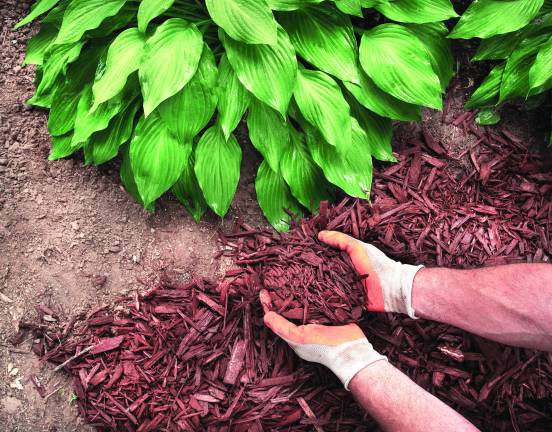Before you mulch
Mulch. Mulch suppresses weeds, retains moisture and enhances soil quality.

Every thriving flower bed starts with a solid foundation of mulch. It provides a big aesthetic boost, of course, serving as a showcasing background for your plants and shrubs.
THE RIGHT TIME
Apply mulch in the spring after planting your seasonal flowers and vegetables. Mulching around trees and other landscape features also enhances their visual interest. You’ll be putting the perfect finishing touch to your gardening efforts. Over the next few months, mulch will act as a protective layer that keeps weeds away. Into the winter, it prevents plant displacement while shielding delicate plants from cold weather. Once the mulch has fully decomposed, it’s time to refresh or completely replenish.
EXPLORE THE OPTIONS
There is a wide variety of mulch available for any type of flower bed or garden, including wood chips, bark, pine straw, rubber mulch, dyed wood, grass clippings and even newspaper. Select a type that complements the colors of your landscaping and home, and make sure it suits your local environment. If you choose dyed mulch, apply it during a period where it won’t rain for 24 to 48 hours to prevent staining nearby hard surfaces.
HANDLING MULCH
Wear gardening gloves when handling mulch to shield your hands from splinters and any dyes. Choose comfortable old clothing that you don’t mind getting soiled. If you have allergies, consider wearing a face mask for added protection. Use a wheelbarrow or cart along with a shovel to transport the mulch, and lift from your knees rather than your back. To complete the job, rake the mulch to create an even layer.
MULCH CARE
If weeds begin emerging through the mulch, remove them manually or apply a weed and grass killer. Mold may develop in areas where the entire surface isn’t exposed to air and light. Gently turn the mulch and evenly redistribute everything. As the mulch dries, the mold should dissipate. Exposure to sun and rain will cause your mulch to fade and break down, but that’s part of its purpose to enrich the soil. Turning the mulch will also help maintain its appearance for a longer period.